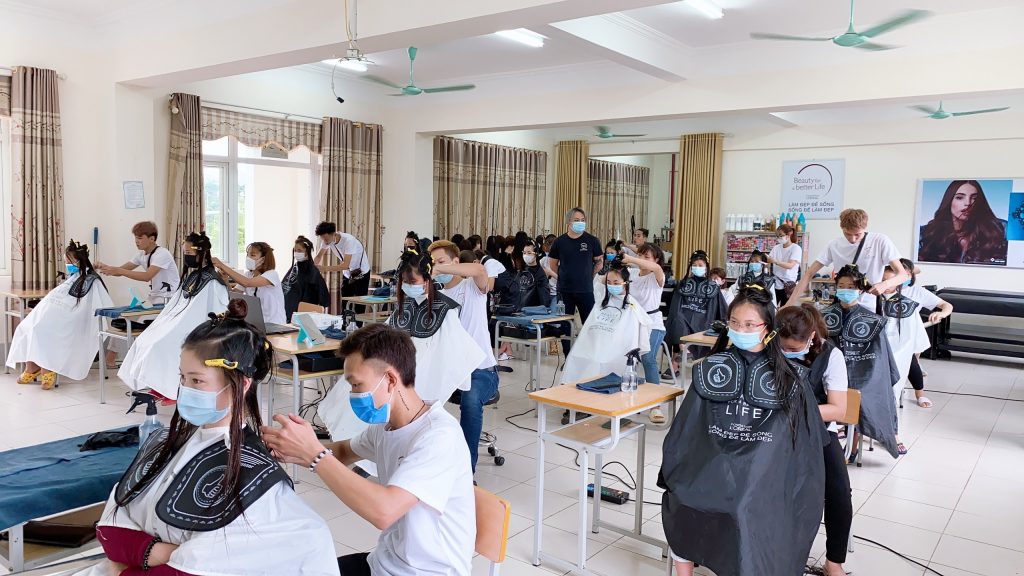Every industry domain has experienced an advancement in technology in recent decades, and the education technology industry is no exception. Creative approaches are revolutionizing teaching strategies that are mainly reliant on textbooks and lectures. Immersive and interactive learning pedagogies that transcend the bounds of conventional education have emerged as a result of this transformation. As a result, Artificial intelligence tools like augmented reality (AR) and virtual reality (VR) have fundamentally changed how we engage with learning content. With the help of these revolutionary technologies, learners will actively explore, participate in conversations, and learn in ways that were never possible until now.
The problem of disengagement and passive learning, which frequently arises in traditional educational approaches, now can be addressed through embedding AR and VR within the instructional pedagogy of the content. Adapting to AR and VR will make the content more immersive, interactive, and experiential, tackling the issue of disengagement and turning passive learning into active involvement. This will give learners the chance to investigate and engage with virtual environments, situations, and simulations, creating a deeper comprehension and memory of the content . When the learners are engaged with the content and actively involved, it also improves understanding, recall, and critical thinking skills by allowing learners to visualize complicated topics. Additionally, AR and VR boost accessibility by providing virtual experiences that can be accessed from anywhere, circumventing geographical limits. This inclusive approach ensures that all learners have equal access to immersive and engaging learning experiences.
Advantages of AR- and VR-based Trainings in Organizations
Protected Learning Environment
VR based training is a personalized learning environment, where the learning outcomes provide an opportunity to the learners to perform a self-evaluation and take corrective measures till desired / required results are achieved. Learners have the flexibility to test their skills through assessments with multiple attempts and options to restart, allowing them to apply their knowledge. This g format of learning pedagogy helps the learner to maximize their learning intake by providing endless opportunities and freedom.
Experience-based Learning Environment
By actively engaging learners through experienced based real-world simulations, virtual scenarios, and interactivities, takes the learning experience above and beyond the approaches that were used in the past. Learners are seen to be more motivated and engaged with the content, which enhances knowledge retention, critical thinking, and problem-solving abilities, hence making the learning goals assessment more qualitative and achievable.
Theory to Practice
The gap between academic understanding and practical application is filled via interactive training. Realistic simulations and hands-on learning opportunities help learners prepare for real-world problems and maximize the transfer of skills and knowledge.
Time and Cost
AR and VR-based training drastically increase time and cost efficiency in organizational training programs. Streamlined processes and the elimination of physical intervention reduces training time and expenses along with giving the flexibility to the learners of learning anywhere at any time . Scalability and remote accessibility lowers the cost when the learning programs are rolled at a large scale. When it comes to adapting to an AI based learning model, the initial investment may be a bit high but these are one-time investments where the training can be used and re-used for the foreseeable future without incurring additional costs towards development and roll-out.
We can expect a future where these technologies will become progressively widespread in the learning and development landscape as organizations continue to embrace AR and VR-based interventions. More immersive and realistic training experiences will be possible because of improvements in technology and platforms. Programs for training that are individualized and adaptable will be made possible by the merging of artificial intelligence and data analytics. Additionally, social and collaborative components will improve team-based learning and information sharing. With constant advancements, AR and VR will change interactive learning experiences and enable businesses to maximize the potential of their employees.
At ACL, our goal is to improve learning methods by focusing on the retention of information and interaction. Our lessons and programmes are created to encourage involvement, comprehension, and actionable results. You can maximize the educational process at your organization by partnering with ASSIST Creative Lab. Together, we will design transformative learning opportunities that inspire achievement in learners.
Reference:
Talespin – The advantages of virtual training.
https://www.talespin.com/blog-post/the-advantages-of-virtual-reality-training
Programace – Augmented Reality in Corporate Training: Save Resources While Increasing Performance. https://program-ace.com/blog/augmented-reality-in-corporate-training/




